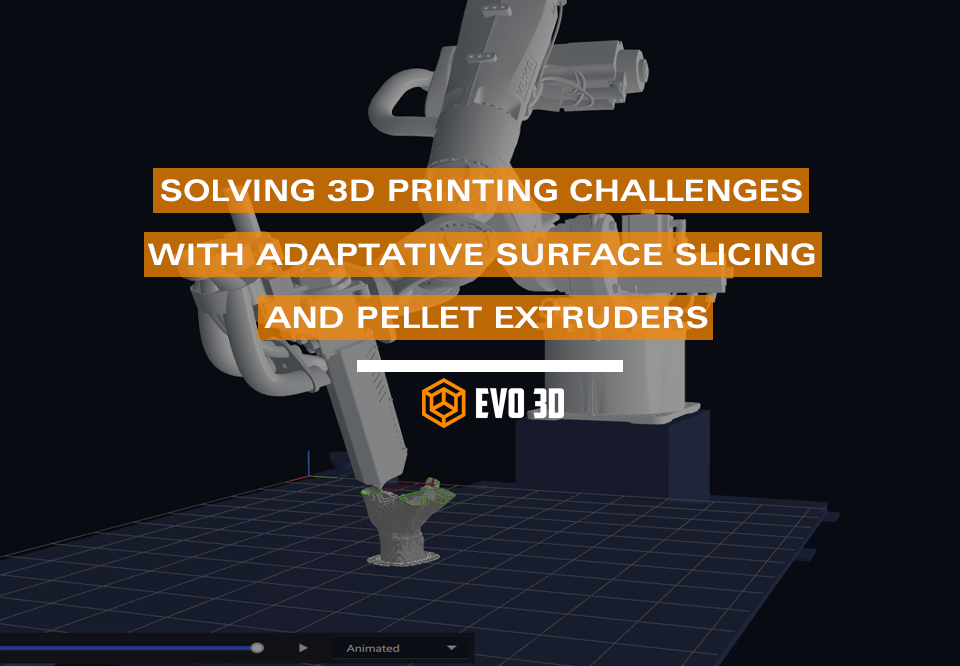Solving 3D Printing Challenges with Adaptive Surface Slicing and Pellet Extruders

3D printing has come a long way, and with new technology comes new challenges. Recently, we had the opportunity to 3D print a challenging part using a non-planar adaptive surface slicing technique on our robot. In this blog post, we will discuss the challenges we faced when printing this part, and how we overcame them.
The part we were printing was a hand with several difficult overhangs in multiple directions. We wanted to avoid using support to ensure that the print process was as efficient as possible. Angled printing is a common way to solve overhangs, but it is limited to a single direction, which was not sufficient for this particular part. We needed a technique that would allow us to avoid support while ensuring that the print quality was high.
To overcome this challenge, we worked with a novel slicing technique from ADAXIS where it is possible to slice the part with an specifically adapted curved surface instead of an angled plane. This technique allowed us to vary the print angle based on the geometry of the part, ensuring that we could avoid overhangs in multiple directions. By using this technique, we were able to print the part without the need for any support structures, resulting in a more cost-effective printing process.
The non-planar adaptative surface slicing technique involves slicing the 3D model into thin layers that follow the contours of the part's shape. This technique allows for the creation of complex geometries that would be difficult to achieve with traditional slicing techniques. The result is a more accurate and precise printed part that meets the required specifications.
The use of this technique has many potential applications, particularly in industries such as props and large-scale sculptures, where intricate and complex shapes are required. By using non-planar surface slicing, it is possible to achieve high-quality prints of complex shapes without the need for support structures, resulting in a more efficient printing process.
The use of pellet extruders in robotic printing with KUKA robots also provides several benefits. Pellet extruders offer a cost-effective and eco-friendly alternative to traditional filament extruders, and are well-suited for large-scale printing projects. The use of robotic printing with KUKA robots allows for greater precision and accuracy in the printing process, ensuring that the final product meets the required specifications.
In conclusion, the non-planar surface slicing technique is a powerful tool for solving challenging 3D printing projects. By varying the print angle based on the geometry of the part, it allows for the avoidance of difficult overhangs in multiple directions while ensuring that the print quality remains high. This technique has many potential applications in industries such as props and large-scale sculptures, and with our commitment to pushing the boundaries of 3D printing technology, we are excited to see what the future holds. If you have a challenging 3D printing project that requires a non-traditional approach, contact us to see how we can help.
